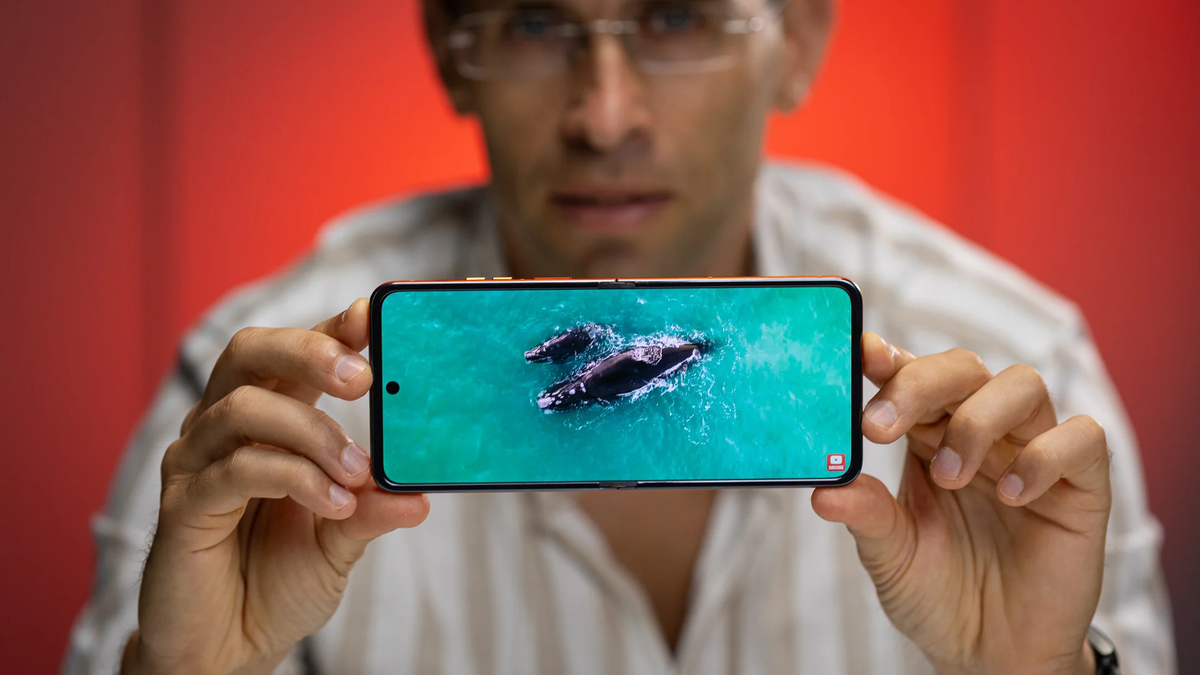I wanted to start big, so I purchased a custom-designed Robotech Cyclone Motorcycle model online. I sliced it in Chitubox at the 0.05mm resolution and saved it to the USB thumb drive. The battleoid component printed in one piece, with the autogenerated supports peeling effortlessly away from the model.
(Credit: Michael Lydick)
Next up was the motorcycle component of the model. This time, there were two pieces, filling up the entirety of the large build plate. (As you’d expect from having an exceptionally large print area, the M7 Max is relatively heavy at 53 pounds, more than both the Form 3+ and the Ultimaker S5.)

(Credit: Michael Lydick)
Finally, I found a model that just about maxed out the Z-axis—a replica of the sculpture from the movie Dune featuring a low-poly matador and a bull from House Atreides.

(Credit: Michael Lydick)
There were no failures here, either, and each model easily peeled away from the textured build plate.
My wife had a birthday while I was testing the M7 Max, and each year she adamantly declares that I should not spend money on her, and not make a fuss. But I decided to whip up a figurine for her anyway (she’s a big Wonder Woman fan). Technically, I wasn’t buying anything; I was making it. So I downloaded a file and finished off with a stunning figurine with sharp, brilliant details and no visible lines or aliasing effects. This model was printed at the 10-micron setting with a 2-second layer exposure and a 100-second bottom layer time to ensure a good first layer adhesion.

(Credit: Michael Lydick)
I then downloaded three calibration test files to see what happens at the 0.01mm level: the test pattern from Ameralabs, a calibration card from Siraya on Thingiverse, and the Cones of Calibration model from TableFlip Foundry.
All three together emerged from the gray goo…

(Credit: Michael Lydick)
Once I cleaned them off and cured them, I was amazed at the M7 Max’s performance with the Ameralabs file. A 2-second cure time seemed to be nearly perfect for this resin. The M7 Max easily handled the gaps from the 1.0mm to 0.10mm spacings on the back of the print…

(Credit: Michael Lydick)
Next up was Siraya Tech’s calibration card from Thingiverse. I chose it for its highly detailed calibration cube. I maxed out my camera’s zoom function to see that every part of the cube lattice had printed effortlessly. I measured the 10mm calibration marks with my caliper and registered 9.94mm…

(Credit: Michael Lydick)
Finally, the Cones of Silence, er, Calibration. If my exposure times were in the ballpark, I should have fully completed cones on the side marked Success, and cone breaks on the Failure side. I appreciated the yes-or-no visuals of this, and the M7 Max didn’t disappoint…

(Credit: Michael Lydick)

(Credit: Michael Lydick)
I broke the highly detailed sword away, and it slid smoothly into the skull. It did not fit into the fail holes of the Attunement Block. Similarly, the “Ale of Accuracy” easily slid into the mug…

(Credit: Michael Lydick)
Were it too large, it would have indicated the exposure time was too high. Too loose, too low.
The 6mm calibration measurement came in at 5.98 mm as measured…

(Credit: Michael Lydick)
Finally, I loaded up the test prints we use for all 3D printers, starting with the 3D Benchy…

(Credit: Michael Lydick)
I printed this at the 50-micron level with standard resin, without an issue. Fine details were easily visible, with minimal ringing visible. It’s strange to print this test print on a unit with a 10-micron capability; I wonder if the first designer ever imagined this would be possible someday on an SLA machine when it first started printing on early FDM units like the Prusa i3. The Benchy has sailed everywhere, and I’ll probably load it when the Star Trek replicators start shipping.
The Kickstarter/Autodesk test print lets us see the accuracy of overhangs and tapered towers, and it was no problem for the M7 Max…

(Credit: Michael Lydick)
The dowels all easily came out of their holes once the print was cured, from the 0.2 straight through the 0.5 holes with no interference fits. Everything from a 15-degree to a 45-degree overhang printed brilliantly without deformation or issue.
Finally, here’s our geometry detail test print…

(Credit: Michael Lydick)
I printed this one with the 50-micron setting and a 2-second exposure time, which produced clean, issue-free results with perfectly round shapes and dimensionally stable dimensions. The surfaces of the spheres printed smoothly, with some texturing on the surface due to the originally sliced STL file.








